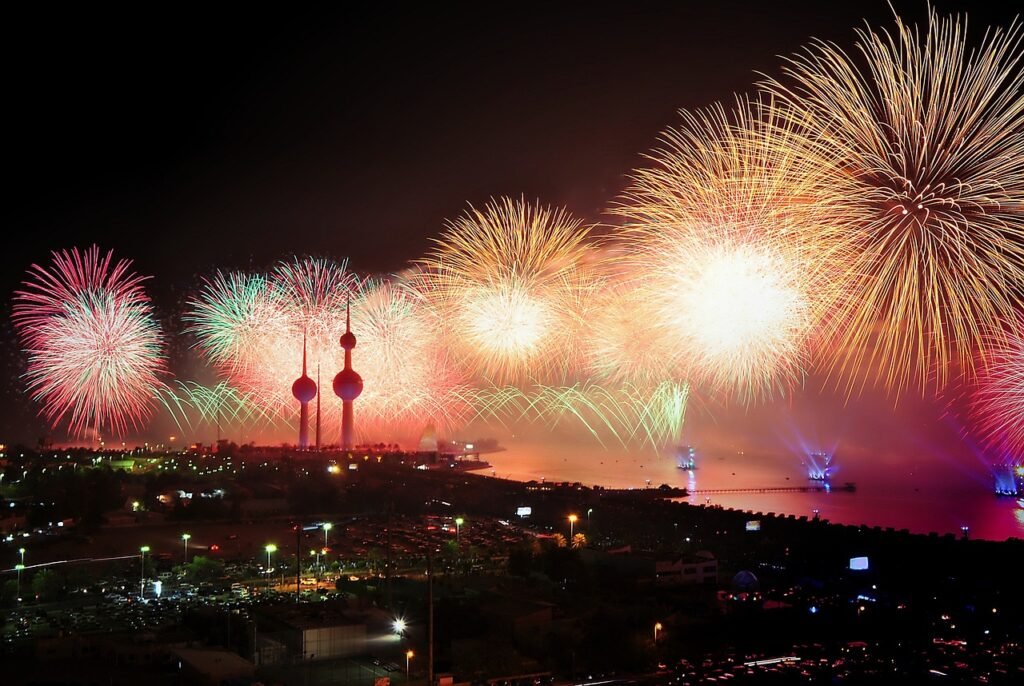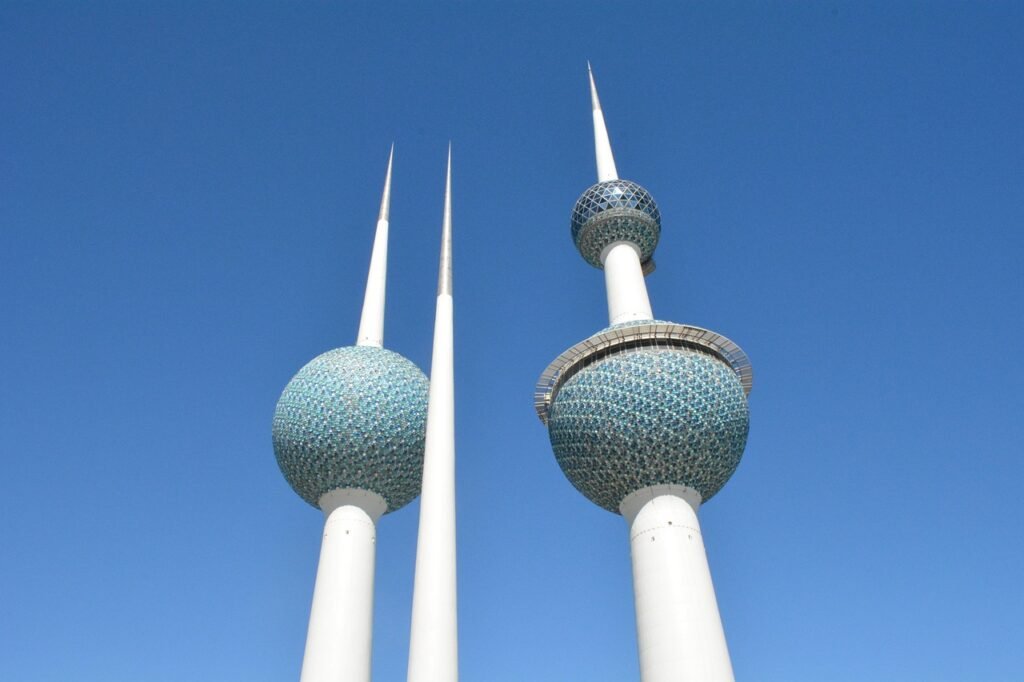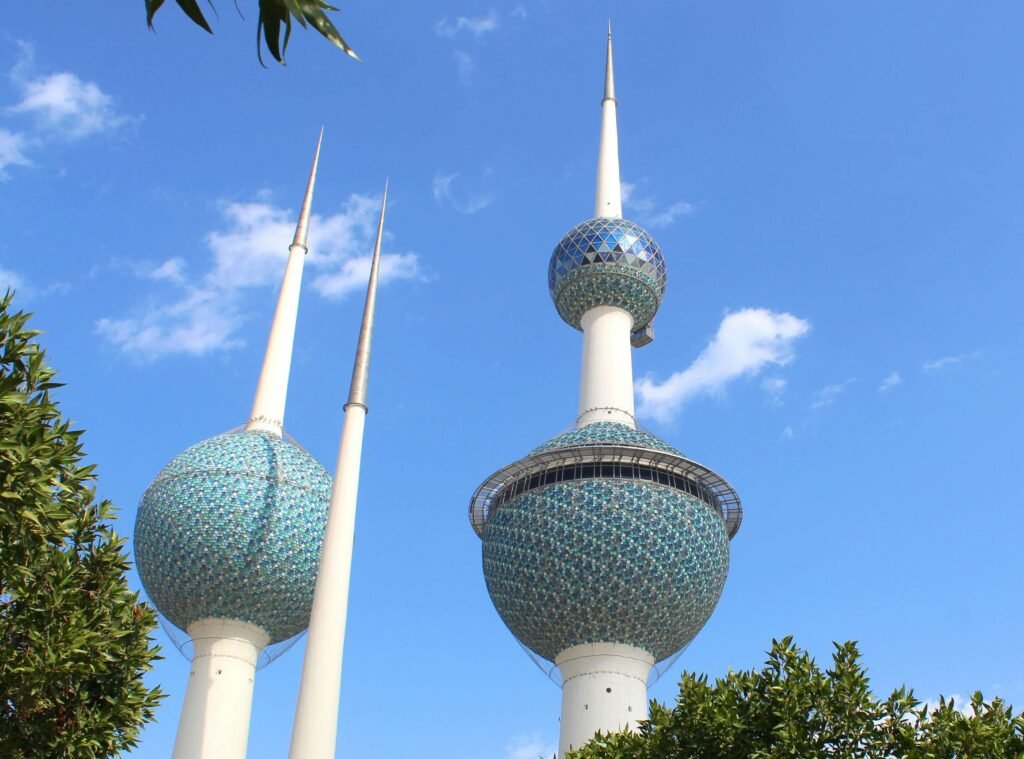Welcome to the ultimate guide on how to maximize your short stint in Kuwait during a long layover. We were in Kuwait just one day to soak in the sights, flavors, and experiences of this Middle Eastern gem. While it may seem like a fleeting moment, fear not—we’re here to ensure every minute counts. Drawing from our own whirlwind “fast-track” trip, we’ll share insights, tips, and must-see attractions to make the most of your time in the city. So buckle up and get ready for an adventure-packed journey through this dynamic city, where every moment is an opportunity for discovery and delight.
Table of Contents
Introduction
Kuwait is a small Middle Eastern country located on the northwestern coast of the Persian Gulf. With a population of around 4 million, country has a rich history and culture.
The area has been inhabited since the Bronze Age, with settlers arriving to take advantage of its natural harbor and fresh water. Kuwait was under the control of various empires over the centuries, including the Persians, Greeks, and Ottomans. It gained independence from Britain in 1961.
It has a desert climate, with long, extremely hot summers and short, cool winters. The average summer temperature is over 110°F. Kuwait gets little rainfall, less than 4 inches per year on average. Sandstorms known as shamals are common.
The Kuwaiti culture reflects influences from other parts of the Arabian Peninsula as well as Persia. Islam is the official religion, with most Kuwaitis being Sunni Muslims. Arabic is the official language. Kuwaitis have a strong Bedouin heritage and tribal identity remains important.
Places to Visit
Kuwait has plenty of places to visit for travelers interested in history, culture, architecture, and entertainment. Some of the top attractions include:
The Grand Mosque
The Grand Mosque is one of the largest mosques in the world and a stunning example of modern Islamic architecture. Completed in 1986, its design features over 50 colorful domes and 4 minarets. The mosque can hold over 10,000 worshippers. Visitors are welcome to tour the interior and admire the intricate Islamic geometric patterns and motifs.
Kuwait Towers
No trip to Kuwait is complete without seeing the iconic towers. These 3 towers stand on a small island in Kuwait Bay and have become a national symbol. The main tower reaches 187 meters high and features a 2-level revolving sphere restaurant with incredible 360 degree views. At night, the towers are illuminated with an ever-changing display of colored lights.
Tareq Rajab Museum
To learn about Kuwait’s history and culture, visit the Tareq Rajab Museum which houses over 30,000 Islamic art objects, textiles, pottery, metalwork, jewelry, and musical instruments. Highlights include a gold and pearl jewelry collection and exhibits on Kuwaiti heritage.
Sadu House
It offers an intimate look into traditional Kuwaiti life. Sadu refers to intricate weaving patterns in Bedouin textiles. The house displays hand-woven rugs, clothing, and tents. You can watch weavers practicing their craft and even take a weaving workshop.
Kuwait House of National Works (KHNW)
The KHNW is dedicated to preserving and promoting Kuwait’s cultural heritage. It contains exhibits on pearl diving, boat building, traditional costumes, arts and crafts, and recreated historic dwellings. Visitors can watch craftsmen demonstrate traditional skills like pottery-making, metalworking, and weaving.
Scientific Center
With over 700 interactive exhibits, the Scientific Center brings science to life. See displays on space travel, energy, transportation, and the natural world. The center also has an aquarium, dinosaur exhibits, and an IMAX theater. It’s great for families and kids.
Museums
Kuwait has several fascinating museums that provide insight into the country’s history and culture. Three of the top museums to visit are the National Museum, Tareq Rajab Museum, and Sadu House Museum.
National Museum
The National Museum, located on Arabian Gulf Street, is one of the most important cultural sites. The museum is housed in an impressive postmodern building designed by French architect Michel Ecochard. Visitors can explore exhibits detailing Kuwait’s heritage from ancient times through the present day. Highlights include displays on the petroleum industry, archaeological finds, Islamic art, artifacts from Kuwait’s pearl diving era, and more. Don’t miss the museum’s planetarium and aquarium located on the grounds.
Tareq Rajab Museum
For a more intimate museum experience, visit the Tareq Rajab Museum in the Dasman area. The museum contains the private collection of Kuwaiti royalty, with over 30,000 pieces of Islamic art, ceramics, metalwork, jewelry, textiles and more. The diverse collection includes items originating from Spain, China, India and other parts of Asia. The museum is located in two beautifully decorated villas with interior courtyards. Allow time to wander through each room and appreciate the intricate artworks.
Sadu House Museum
To learn about traditional Kuwaiti culture, visit the Sadu House Museum located near the towers. Sadu refers to intricate weaving patterns found on Bedouin textiles. The museum is composed of restored Kuwaiti houses that demonstrate traditional lifestyle and architecture. Exhibits feature antique furnishings, musical instruments, costumes, jewelry, and textiles with sadu patterns. Visitors can watch weaving demonstrations and learn about the meanings behind sadu designs. The gift shop sells high-quality sadu woven products.
Shopping
Kuwait is a shopper’s paradise, with traditional souks, modern malls, and plenty of bargains to be found. The main shopping areas are in Kuwait City and Salmiya.
Souks
For a traditional shopping experience, head to one of the souks (markets). The most famous is the Souk Al-Mubarakiya in Kuwait City, which has been operating for over 100 years. Wander through the labyrinth of covered walkways and browse stalls selling spices, perfumes, jewelry, fabrics, handicrafts, and more. Bargaining is expected. The Gold Souk in Kuwait City is another top spot to pick up 18k and 21k gold jewelry.
Other notable souks include the Friday Bird Market near the Scientific Center, where you can buy exotic birds, the Friday Market in Al-Rai for cheap clothes and household goods, and the Fruit and Vegetable Market in Shuwaikh for the freshest produce.
Malls
For more modern, air-conditioned shopping, Kuwait has dozens of malls. Some of the top options include:
- The Avenues – Kuwait’s biggest mall with hundreds of international brands, restaurants, entertainment, and the largest indoor water park in Kuwait.
- Marina Mall – Prestigious luxury brands alongside mainstream stores, plus a marina promenade.
- 360 Mall – Over 800 stores, an ice skating rink, indoor theme park, and the Observation Balcony with panoramic city views.
What to Buy
Great souvenir finds in Kuwait include traditional handicrafts, gold jewelry, perfumes, spices, dates, and camel milk chocolate. Kuwait is known for its high-quality incense – oud, bakhoor, and attars. You can also pick up traditional clothing like the dishdasha (men’s white robe) or abaya (women’s black robe). For a unique memento, get a Sadu weaving made by Bedouin women.
When shopping at the malls, take advantage of big international brands and tax-free shopping. Electronics, cosmetics, clothes, watches, and accessories tend to be good deals.
Cuisine
Kuwaiti cuisine is characterized by its diverse cultural influences and flavors. Some popular traditional dishes include:
Machboos
Machboos is the national dish, consisting of seasoned rice cooked with meat, usually chicken, lamb or fish. Spices like saffron, cumin and cinnamon give machboos its distinct taste. The rice is cooked in a special way called “kabsa” where it comes out fluffy. Machboos is usually served with a side salad and yogurt.
Kabsa
Kabsa is another rice dish that is considered part of traditional Kuwaiti cuisine. Unlike machboos, kabsa does not contain meat. It is flavored with spices like cardamom, cloves, cinnamon and bay leaves. Raisins and nuts are often added to give it a sweet taste.
Margooga
Margooga is a popular stew that contains beef, chicken or fish along with vegetables like tomato, okra, eggplant, onion and chili peppers. Traditional margooga is slow-cooked until the meat becomes very tender. The stew has a rich, thick consistency.
Harees
Harees consists of boiled, cracked or coarsely-ground wheat mixed with minced meat and seasoned with spices. It has a porridge-like texture and is sometimes referred to as the national breakfast dish. Harees can be eaten sweet by adding date syrup or plain.
Falafel
Falafel are deep-fried balls made from spiced chickpeas and usually served with tahini sauce. It is a staple of Middle Eastern cuisine that is also popular in Kuwait.
For dessert, some sweet treats to try are lgeimat (fried dough balls soaked in date syrup), baklava and maamoul (filled semolina cookies).
There are many excellent local restaurants and cafes to try authentic Kuwaiti food. Some recommended spots in Kuwait City include Layali al Helmeya, Al Boom Restaurant and Al Marsa Floating Restaurant.
Nightlife

Kuwait has a lively nightlife scene, especially in the big cities like Kuwait City. Here are some of the top nightlife options and entertainment:
Bars
Some of the most popular bars in Kuwait include the Hard Rock Cafe, Movenpick, and the Tower Club. Hard Rock Cafe located in the Arraya Center is a lively venue with live music performances and an extensive drinks menu. Movenpick Hotel has several bars including The Deep lounge bar and The View rooftop bar, both lively spots to enjoy cocktails with scenic views. The Tower Club at the Arraya Center has an upscale bar on the top floor with panoramic city views.
In addition, many of the top hotels have lobby bars and lounges that are nice spots for an evening drink. Some recommended hotel bars include Trader Vic’s at the JW Marriott, Waves Lounge at the Jumeirah Messilah Beach Hotel, and Skyline at the Marina Hotel.
Clubs
For nightclubs and dancing, some of the most popular hotspots include Bliss Lounge, Pablo Escobar Night Club, and TrendZ Club. Bliss Lounge is a lively nightclub with DJs playing the latest hits. Pablo Escobar is designed like a Miami-style nightclub with neon lights and a large dance floor. TrendZ Club is a multi-level club with different music styles on each floor ranging from Top 40 to Arabic pop.
Outside of the city, Khaitan is known for its lively club scene. Some of the most popular clubs there include Khuzama Club, Octagon Club, and Club 33. Many locals and expats head to Khaitan on the weekends to enjoy the vibrant nightlife.
Live Entertainment
For live entertainment, there are theaters, comedy shows, and concerts happening in Kuwait. Some venues to check for events include the National Theater, Abdulhussain Abdulredha Theater, and the Jaber Al Ahmad Cultural Center. The Scientific Center also hosts regular concerts, shows, and entertainment.
During the cooler months, outdoor festivals bring carnivals, markets, and live music to Kuwait. The popular festivals to experience include the Hala February Festival, the Salmiya Summer Festival, and the Qout Market.
So in summary, Kuwait City and Khaitan offer the liveliest nightlife. Check out the bars at the top hotels and independent venues like Hard Rock Cafe. Go dancing at hotspots like Bliss Lounge and Pablo Escobar. And see what concerts and shows are happening at the various theaters and festivals. Kuwait’s nightlife scene has lots of options for a fun night out.
Outdoor Activities
City has a number of outdoor activities for visitors to enjoy. The country’s beaches provide opportunities for swimming, sunbathing, and water sports. Some popular public beaches include Messila Beach, Khiran, and Al Khiran. These beaches have amenities like showers, restrooms, and food kiosks. For those looking to be active, walking and jogging along the shoreline is pleasant in the early mornings and evenings when temperatures are cooler.

Kuwait also has several parks that allow for recreation and relaxation. Al Shaheed Park is one of the most popular, spanning over 600 acres. It contains lakes, gardens, museums, restaurants, and play areas. Other notable parks include Al Hamra Tower Park, Green Island, and Kuwait Towers Park. These provide nice green spaces amidst the city landscape.
In addition to beaches and parks, city has a good network of paved walkways along the waterfront. The Kuwait Waterfront Project extends several miles and includes fountains, seating areas, and sculptures. It’s a great place to take an evening stroll and enjoy views of the Persian Gulf. For birdwatchers, there are walking trails around the wetlands near Sulaibikhat Bay that provide opportunities to spot migratory birds.
Kuwait’s climate means outdoor activities are best enjoyed during the cooler months between October and April. Summers are extremely hot and dry. But the beaches and parks still allow for open-air recreation year-round. Visitors should bring hats, sunscreen, and water to stay protected and hydrated.
Day Trips
Kuwait City serves as an excellent home base for exploring the country’s top attractions just a short drive away. Here are some of the most popular and worthwhile day trips and excursions from the capital:
Failaka Island
Failaka Island is a must-visit located 20 km off the coast of Kuwait City in the Persian Gulf. Often referred to as the “Jewel of Kuwait”, it was once a thriving Greek settlement thousands of years ago. Today, visitors can explore the island’s archaeological sites, beaches, traditional fishing villages, and more. Don’t miss Al-Zor House, one of the oldest buildings in Kuwait. The best way to reach Failaka Island is by boat from the Marina Mall in Salmiya.
Mutla Ridge
For stunning desert scenery, head to Mutla Ridge in the Al-Jahra district about an hour from Kuwait City. This protected nature reserve features dramatic cliffs, deep wadis, and ever-shifting sand dunes. Go dune bashing in a 4×4 vehicle or on a quad bike tour for an adrenaline rush. Watch a magical sunset over the desert landscape.
Kabd Town
Travel back in time with a trip to the historic mud-brick town of Kabd. It resembles an open-air museum showcasing Kuwaiti culture and heritage. Wander through the reconstructed old-style souq, sip Arabic coffee in traditional majlis tents, and learn about pearl diving and Bedouin life. Kabd is located about 90 minutes from Kuwait City.
Al-Ahmadi
Al-Ahmadi is home to Kuwait’s first oil well and provides a fascinating look at the country’s oil industry. Visit the Oil Display Center with its interactive exhibits and the nearby Oil Rig Museum. While you’re there, don’t miss the quirky Red Palace art installation shaped like a traditional Kuwaiti home. Al-Ahmadi is about an hour south.
With Kuwait’s small size, excellent roads, and proximity to top sights, it’s easy to take rewarding day trips from the capital. Rent a car or join guided tours to visit these attractions.
Getting Around
Country has a modern and efficient public transportation system. The main options for getting around are:
Public Transportation
The public bus system is operated by the Public Authority for Roads and Transportation (PART). Buses serve routes within Kuwait City as well as between the city and major suburbs. Fares are very affordable. Routes and schedules can be found on the PART website.
Within Kuwait City, the most useful buses for visitors are route 13, which connects the city center to the Kuwait Towers, and route 12, which goes to The Avenues Mall. Buses generally run from 5am to midnight.
For travel between cities, the intercity buses are air-conditioned and comfortable. Major routes connect Kuwait City to areas like Jahra, Ahmadi, and Fahaheel. Buses heading south depart from the main bus station in Kuwait City.
Taxis
Taxis are easy to hail in the street in the major cities, or can be booked by phone. They are metered, so fares are consistent. Just be sure to negotiate the fare before getting into a taxi outside of the city, where metered taxis may not be available.
You’ll find orange and white taxis operated by KPTC (Kuwait Public Transportation Company). This is generally considered to be the best taxi service.
Private taxi companies also operate radio taxi fleets, which can be pre-booked by phone or app. Some popular companies are City Taxi, Taxi 4, and Metro Taxi. Rides can also be booked through apps like Careem.
Driving
Many visitors choose to rent a car, as it allows maximum flexibility for getting around. Major rental agencies like Avis, Budget, Hertz, Europcar, and Thrifty all operate in Kuwait.
Driving is on the right-hand side. Rules follow international standards, with seat belts required and mobile phone usage prohibited while driving. Most signage is in English and Arabic.
A valid foreign drivers license is required to rent and drive. Be sure to also get an International Driving Permit (IDP) and carry both licenses when driving.
Roads are generally well-maintained. Driving within Kuwait City can be challenging due to traffic and complex intersections. Using navigation apps like Google Maps is highly recommended. Outside of the city, the highways are modern 4-6 lane roads.
Conclusion
As our journey through Kuwait comes to a close, we reflect on the whirlwind of experiences and sights encountered in this captivating country. From the bustling markets of Souq Al-Mubarakiya to the serene shores of the Arabian Gulf, Kuwait has left an indelible mark on our hearts and minds.
Whether you’ve savored the flavors of traditional Kuwaiti cuisine, marveled at the modern skyline, or delved into the rich tapestry of history and culture, one thing is certain: Kuwait offers a unique blend of old-world charm and contemporary allure. As you bid farewell to this dynamic destination, carry with you the memories of its warmth, hospitality, and vibrant spirit. Until we meet again, may your travels be filled with adventure, discovery, and the joy of new experiences. Safe travels!
Plan your trip with ease by visiting our Accommodation and Transportation pages. Discover unbeatable deals for a seamless and unforgettable adventure!
